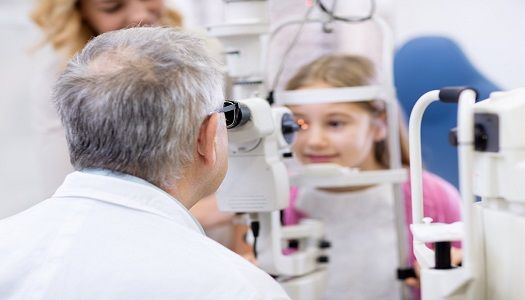Article
Strabismus in Children Associated With Lower Quality of Life
Author(s):
New research is shedding light on the impact pediatric strabismus has on the quality of life of children and their families.

A new study from JAMA Ophthalmology is offering physicians and clinicians a better idea of how strabismus in children is associated with functional vision and eye-related quality of life.
Carried out by investigators from the Mayo Clinic in Rochester and the University of Texas Southwestern Medical Center, results of the study indicated strabismus was associated with reduced functional vision and eye-related quality of life in children, and even a reduction in quality in life for their parents.
With strabismus impacting between 2-4% of children in the US, investigators—led by Jonathan Homes, BM—conducted a cross-sectional study of 91 children with strabismus and 166 visually normal controls. Patients were divided into 3 age groups and were enrolled at the Mayo Clinic in Rochester, MN and the Retina Foundation of the Southwest in Dallas, TX.
Visually normal controls were defined as children with normal visual acuity, no refractive current, and no current or previous eye disease or treatment. All individuals included completed the child PedEyeQ and the child PedsQL, while a parent or guardian for each child completed the proxy and parent PedEyeQ as well as the proxy PedsQL and the PedsQL Family Impact Module.
Briefly, the PedEyeQ is a functional vision and eye-related quality of life (ER-QOL) questionnaire composed of child, proxy, and parent components. Each questionnaire uses a 3-point frequency scale with 1 indicating never and 3 indicating all the time. The child PedEyeQ assessed vision across domains including functional vision, bothered by eyes/vision, social, and frustration/worry. The proxy PedEyeQ assessed functional vision bothered by eyes/vision, social, frustration/worry, and eye care. The parent PedEyeQ assessed the impact on parent and family, worry about the child’s eye condition, worry about the child’s self-perception and interactions, and worry about the child’s functional vision.
Of the 91 children with a diagnosis of strabismus, 45 were between the ages of 0 and 4 years, 31 were 5-11 years old, and 15 were 12-17 years old. Additionally, 44 of the 91 had esotropia and 47 had exotropia—the median angle was 25 (10-50) PD. Investigators noted 4 children were unable to okmplete the PedEyeQ and PedsQL but all proxy and parent questionaries were completed. In regard to the 166 visually normal controls, 66 were between the ages of 0 and 4, 79 were 5 to 11 years old, and 25 were 12 to 17 years old.
When comparing questionnaire score in children with strabismus to those with normal visual, child PedEyeQ scores were lower for children aged 5 to 11 years old with strabismus across all domains compared to controls. In those between 12 and 17 years, child PedEyeQ scores were also lower for children with strabismus across all domains. The biggest score difference among 5- to 11-year-olds was in the functional vision domain (12 [14] points; 95% CI, 6-18; P=.001) while the most prominent difference in the 12- to 17-year-olds was in frustration/worry (27 [13] points; 95% CI, 18-36; P <.001).
For proxy PedEyeQ, scores were lower for children with strabismus across all domains and age groups. In those 0 to 4 years of age the greatest difference was seen in functional vision (13 [9] points; 95% CI, 9-16; P <.001). Similarly, the greatest difference was also seen in functional vision for those aged 5 to 11 years n (26 [10] points; 95% CI, 22-30; P <.001). Among those aged 12 to 17 years old, the biggest score differences were noted in functional vision (21 [12] points; 95% CI, 12-30; P <.001), social (21 [13] points; 95% CI, 12-30; P <.001), and frustration/worry (21 [13] points; 95% CI, 12-30; P <.001).
When examining the parent PedEyeQ, scores across all domains were lower for parents of children with strabismus—with the greatest difference occurring in worry about child’s eye condition (38 [14] points; 95% CI, 34-42; P <.001).
This study, “Association of Strabismus With Functional Vision and Eye-Related Quality of Life in Children,” was published in JAMA Ophthalmology.



